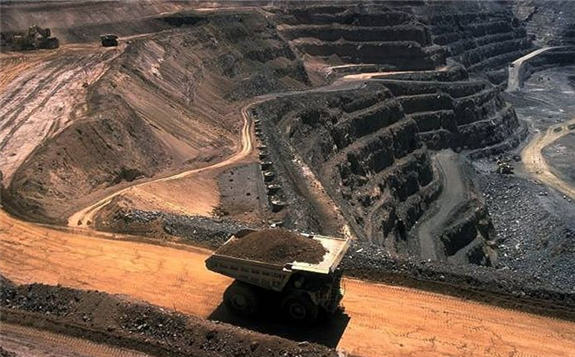Australia's trade relationship with China is struggling as the year winds down.

China has slapped trade restrictions on a range of Australian imported goods including wine, barley, meat, lobster — and most recently, coal.
Australia's coal producers are nervously watching the latest developments, because our coal exports to China were worth $14 billion in 2019.
International Energy Agency officials are monitoring the dispute closely, too.
They say it has compounded uncertainty in the coal trade.
The Office of Australia's Chief Economist is now forecasting a decline in the total value of our global coal exports of nearly $20 billion in 2020-21, which would follow a decline of $14.6 billion in 2019-20.
If its forecasts are correct, it means the value of Australia's coal exports will have practically been cut in half in the space of two years — from $70 billion to $36.7 billion since mid-2019.
It is also warning that intentions by governments across Europe and Asia to cut emissions in coming decades do not bode well for Australia's coal exporters in the long-term.
Late last week, the International Energy Agency released its "Coal 2020" report with forecasts for global coal markets out to 2025, which told a similar story.
According to the IEA, global coal demand probably peaked seven years ago — in 2013 — at just over 8 billion tonnes and, despite a forecast pick-up in demand next year as economies rebound from the coronavirus lockdowns, global demand for coal is forecast to "flatten out" over the next five years at around 7.4 billion tonnes.
"In China, coal demand is reaching a plateau, although our 2025 forecast will need to be reviewed following the release of the Chinese Government's 14th Five-Year plan," the IEA report said.
"Globally, construction of new coal-fired power plants is in decline; other than those currently under construction, few new plants are expected to be built other than in China.
"Unless there are unforeseen developments that significantly boost coal demand in emerging Asian economies and China, it is likely that global coal demand peaked in 2013 at just over 8 billion tonnes."
Why did coal demand peak seven years ago?
According to the IEA's latest report, there are multiple factors dragging down long-term coal demand.
It says global coal consumption is estimated to have fallen by 7 per cent between 2018 and 2020 (worth over 500 million tonnes), and a decline of that size over a two-year period "is unprecedented in IEA records, which go as far back as 1971."
It says the fall-out from the coronavirus shutdowns played an important role, but there are larger dynamics at play.
It says coal use in the United States and European Union has been in structural decline for years.
In the US, the shale revolution has seen gas replace coal as the preferred fuel for power generation.
Between 2011 and 2019, 49 gigawatts of coal-fired generation capacity in the US were retired, 14 GW were converted to burn gas, and 15 GW were replaced with gas combined-cycle technology.
In 2019 alone, coal-fired power generation in the US decreased more than 16 per cent to 1,056 terawatt hours, the largest percentage decline in the country's history and to its lowest level since 1978.
In the European Union, the cost-competitiveness of gas has been increasingly supported by rising prices for CO2 emissions under the EU's emissions trading system.
According to the IEA, the combined coal consumption of the US and European Union now represents just 10 per cent of global coal use.
What about coal demand in Asia?
IEA officials say coal demand has obviously been increasing in the Asia-Pacific region in recent years, driven by China and India, but not by enough to offset the declines in Europe and the US.
In India, 2019 was the first year in four decades in which coal-fired power generation declined, reflecting the country's economic slowdown, its above-average hydropower output and its expanding wind and solar PV capacity.
In China, coal demand is "reaching a plateau," according to the IEA, and "climate change policies, reinforced by the announcement of carbon neutrality before 2060, are reducing the share of coal in the energy mix by promoting energy efficiency as well as generation based on nuclear, wind, solar, hydro, and gas sources."
"Although China's sheer scale and growing demand make it difficult to rein in coal consumption, coal's share in the energy mix has been falling every year for the past decade and the country's policies aim to sustain this decline," the IEA report says.
What else does the IEA report say about Australia?
IEA officials are monitoring Australia's trade tensions with China.
They say Australia wasn't the only country to face import restrictions from China this year, but the restrictions on Australia's coal were increasing uncertainty in the near-term for the global coal trade.
"In the first half of 2020, thermal coal production in Australia was boosted by high demand from China," the report says.
"However, exports to China declined in the second half of the year as import quotas tightened and customs clearance of Australian-origin coal became more difficult.
"If difficulties of Australian coal exports to gain access to Chinese markets persist, unusual coal flows could become the new normal in 2021."
This article is reproduced at www.abc.net.au